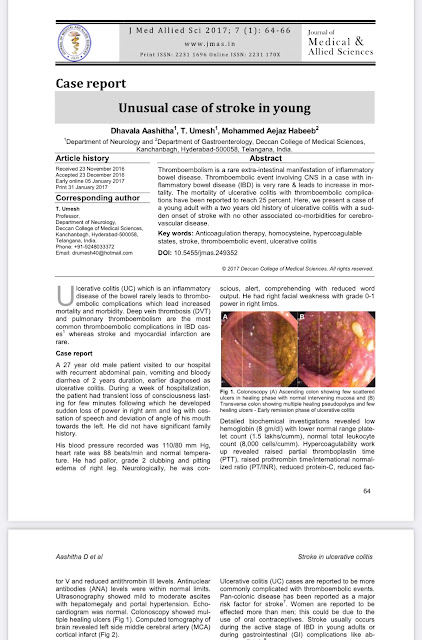Journal on alpha 1 blocker in chronic prostatitis
In reference to the patient mentioned in the blog here 👇
To perform a prospective, placebo-controlled study to examine the long-term efficacy of alfuzosin compared with placebo and standard therapy in patients with chronic prostatitis/chronic pelvic pain syndrome (CP/CPPS)
P - One hundred twenty consecutive men diagnosed with CP/CPPS
I - 17 in the alfuzosin
C - 20 in the placebo
29 in the control/standard group
O -
At the end of 6 months of active therapy, the alfuzosin group had had a statistically significant decrease in total NIH-CPSI score compared with the placebo and control/standard groups (9.9, 3.8, and 4.3 decrease, respectively, P = 0.01). A statistically significant improvement occurred in the pain score in the alfuzosin group at 6 months compared with the placebo and control/standard groups (P = 0.01), but not in the voiding or quality-of-life score among the three groups. Of the patients in the alfuzosin group, 65% had a greater than 33% improvement in the mean NIH-CPSI total score compared with 24% and 32% of the placebo and control/standard groups, respectively (P = 0.02). At 12 months (6 months after the alfuzosin/placebo treatment was discontinued), the symptom scores in all domains of the NIH-CPSI showed deterioration compared with original baseline score in the alfuzosin and placebo groups but not in the control/standard group (NIH-CPSI score 3.5, 0.1, and 5.6 points below baseline, respectively).
https://www.goldjournal.net/article/S0090-4295(03)00466-7/fulltext
To evaluate the efficacy and long-term benefits of tamsulosin in the treatment of chronic prostatitis/chronic pelvic pain syndrome (CP/CPPS).
https://link.springer.com/article/10.1007%2Fs00345-010-0537-3
P - A total of 100 men diagnosed with CP/CPPS were randomly allocated
I - 50 patients received 0.2 mg of tamsulosin daily for 6 months
C - 50 patients received placebo for 6 months
O -
Six months after initiation of treatment, the mean decrement of total NIH-CPSI score in tamsulosin and placebo group were 7.5 ± 1.9 and 4.0 ± 2.3, respectively, P < 0.01. After cessation of therapy, the significant difference waned gradually. Two years after cessation of therapy, the mean decrement of total NIH-CPSI score in two groups were 3.0 ± 1.3 and 1.9 ± 0.9, respectively, P > 0.05.
Our study shows that a 6-month course of tamsulosin ameliorated symptoms of CP/CPPS during treatment. Tamsulosin appears to be due to improvements in pain symptoms rather than voiding orquality-of-life symptoms. However, these effects decreased gradually 6months after cessation of treatment. By the end of the trial (2years after the treatment was discontinued),the symptoms scores in the two groups did not differ. Similarly, there was no significant difference between the tamsulosin and placebo group with respect to multiple secondary outcomes, including the results of peak urinary flow rate, post-voiding residual volume, or the International Index of Erectile Function. Therefore, our result suggeststhat tamsulosin may be needed for longer treatment time inpatients who initially respond to therapy.It is hypothesized that alpha-blockers may relax bladderneck, improve bladder outlet obstruction, decrease intra-prostatic ductal reXux and even reduce neurogenic inflammation in the lower urinary tracts and prostate in men withCP/CPPS
For our patient:






Comments
Post a Comment